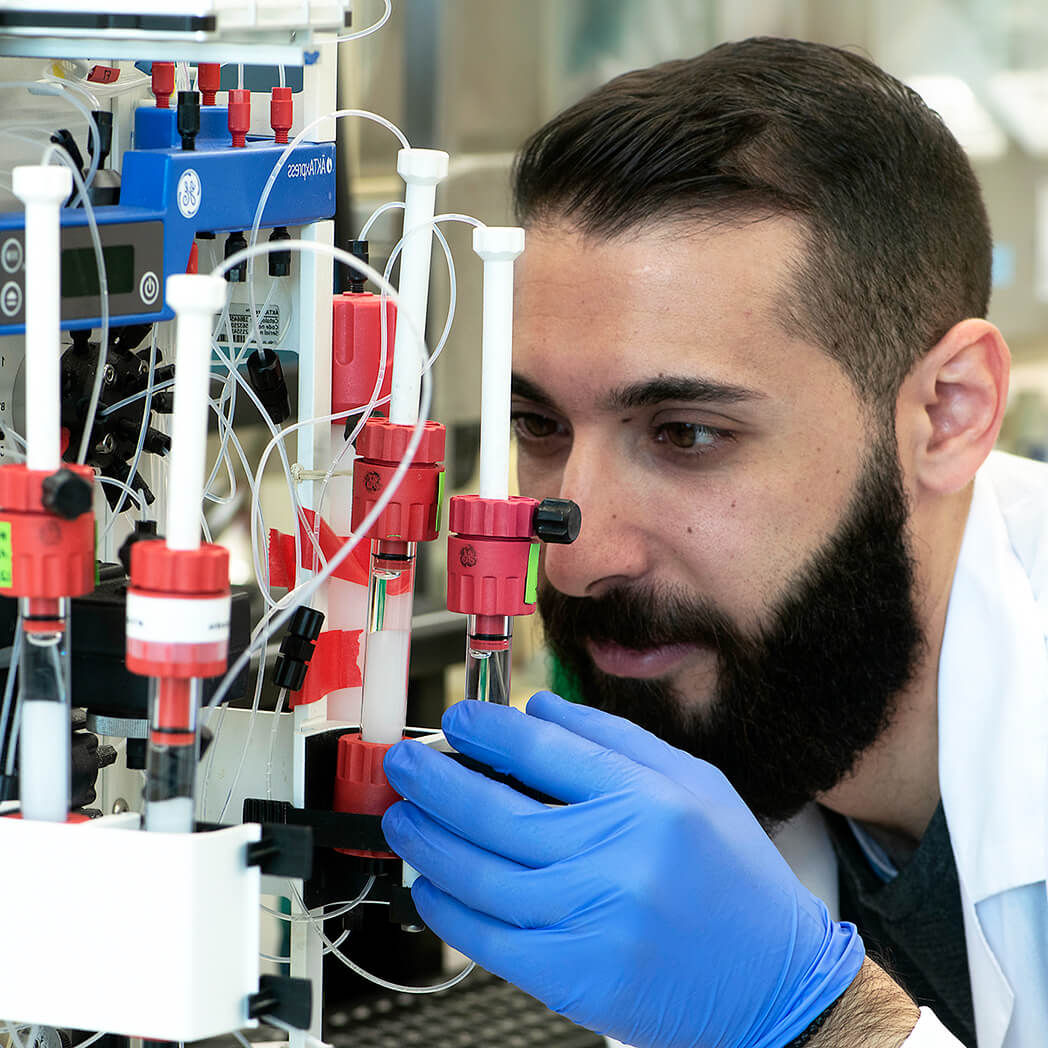Overview
Application key:
Species reactivity key:
Specifications
- Peptide TEEQKKYYNAMKKLGSKK(C), corresponding to amino acid residues 1501-1518 of rat NaV1.1 (Accession P04774). Intracellular loop between domains III and IV.
Applications
- Rat brain and mouse brain membrane fractions (1:800-1:2000).
 Western blot analysis of rat brain (lanes 1 and 3) and mouse brain (lanes 2 and 4) lysates:1,2. Guinea pig Anti-Pan NaV Antibody (#ASC-003-GP), (1:800).
Western blot analysis of rat brain (lanes 1 and 3) and mouse brain (lanes 2 and 4) lysates:1,2. Guinea pig Anti-Pan NaV Antibody (#ASC-003-GP), (1:800).
3,4. Guinea pig Anti-Pan NaV Antibody, preincubated with Pan Nav Blocking Peptide (#BLP-SC003).- Following a broad screen of secondary antibodies, the following was used for this application: #106-035-006 (Jackson ImmunoResearch).
Scientific Background
Voltage-gated sodium channels (NaV) are essential for the generation of action potentials and for cell excitability.1 NaV channels are activated in response to depolarization and selectively allow flow of Na+ ions. To date, nine NaV α subunits have been cloned and named NaV1.1-NaV1.9.4-5 The NaV channels are classified into two groups according to their sensitivity to tetrodotoxin (TTX): TTX-sensitive (NaV1.1, NaV1.2, NaV1.3, NaV1.4, NaV1.6 and NaV1.7) and TTX-resistant (NaV1.5, NaV1.8 and NaV1.9).2-3
Mammalian sodium channels are heterotrimers, composed of a central, pore-forming α subunit and two auxiliary β subunits. The expression of the α subunit isoform is developmentally regulated and tissue specific. Sodium channels in the adult central nervous system and heart contain β1 through β4 subunits, whereas sodium channels in adult skeletal muscle have only the β1 subunit.6,7
